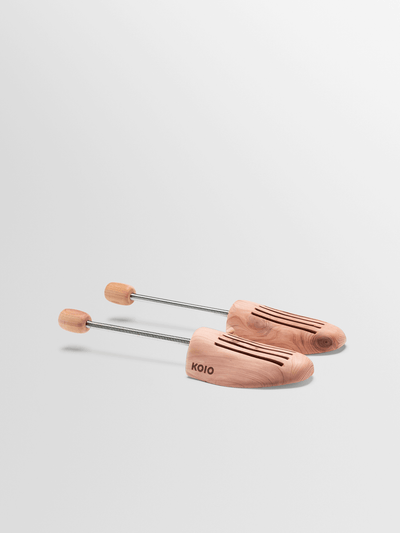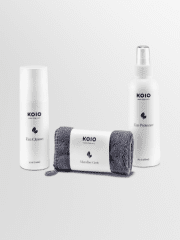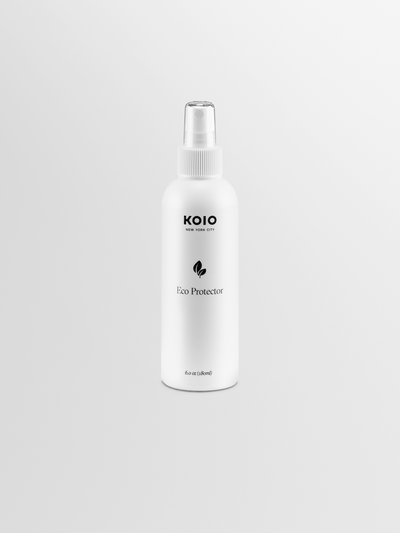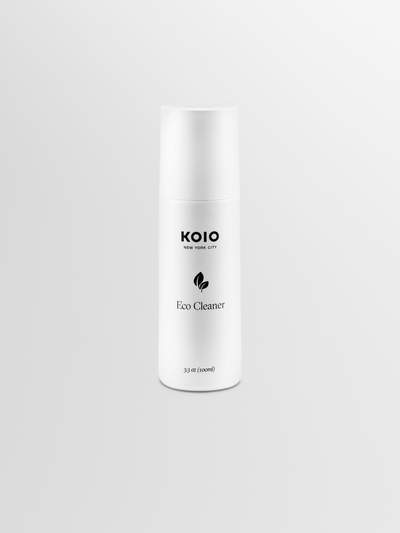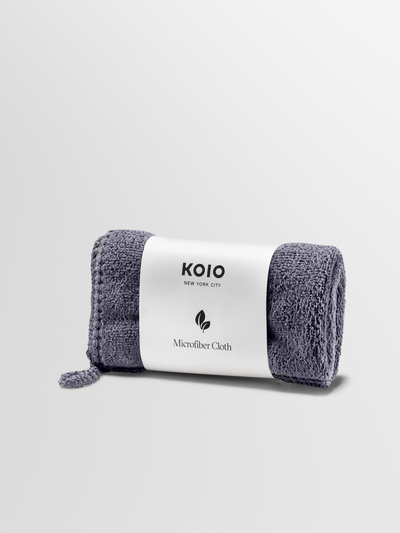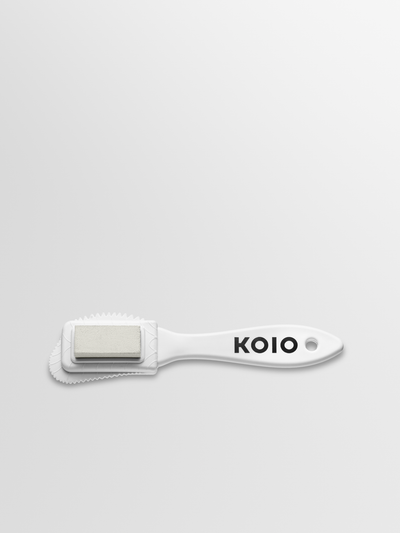If you want to shop wisely for shoes, it’s important to familiarize yourself with their anatomy. Here, we break it all down for you in this guide to the anatomy of a shoe. By the time you finish reading, you’ll be a boot, slide, and sneaker aficionado.
LAST
Before we get into the shoes themselves, let’s talk about the lasts since they’re so important when it comes to construction. Lasts are three-dimensional molds—usually cast from wood, plastic, or aluminum—that mimic the shape of the foot. Every shoe is constructed around a last to determine the toe shape, heel height, structure, and overall feel of the design. There are several different lasting techniques, and here at Koio we use board-lasting and strobel lasting techniques.
UPPER
The upper of a shoe is, well, the upper part of a shoe. The upper wraps around your entire foot, making it one of the most important parts of a shoe. Nearly all of our high-quality uppers are made from Italian suedes and leathers (including our original sneakers, the Primo and the Capri), though some are made with recycled meshes (The Retro Runner) and GOTS-certified organic cotton-canvas (The Capri Canvas).
THE TOEBOX
Contrary to what its name suggests, the toebox isn’t actually always box-shaped—sometimes it’s rounded, and others its pointed. The toebox surrounds and provides extra protection for your toes. It also lends additional support to the upper at the front of the shoe, ensuring your uppers can withstand wear and tear.
HEEL COUNTER
Heel counters are firm pieces of paperboard or plastic that are placed inside the heel of your sneaker or boot to provide support and stability. You won’t find heel counters on backless styles like slides, mules, or flip-flops.
HEEL TAB
“Heel tab” can refer to two different parts of a shoe. On a sneaker, it typically refers to the material above the heel counter. On a boot—such as the Chelsea, Cortina, Trento, or Bergamo—it refers to the loop attached to the collar, which allows for easy on-and-off.
INSOLE
The insole lines the bottom of a shoe’s interior, providing optimal comfort and support for the bottom of your foot. Koios are fitted with OrthoLite® foam insoles that provide up to 20mm (depending on the shoe) of advanced cushioning. They’re made with virgin and recycled materials that work to wick moisture and optimize breathability. We top each insole with a layer of smooth Italian leather for a really luxurious feel.
MIDSOLE
Think of your shoe as a sandwich (hear us out—you’ll understand it in a moment). The upper is the bread on top, and the outsole is the bread on the bottom. The midsole is a lightweight, often foam-like material (we use EVA, and we opt for recycled EVA wherever possible) placed between the two. It’s used to enhance energy return or “bounce” and provide support while you walk.
OUTSOLE
The outsole is attached to the very bottom of the sole to provide traction, flexibility and stability, and to protect the rest of the shoe from the ground. Because they face the ground, outsoles should always be made from durable materials that hold up to frequent wear—this is the key to creating a high-quality sole. Most of our sneakers are made with Forest Stewardship Council (FSC) certified rubber and recycled rubber, but some are made from EVA or leather.
WELT
A welt is a strip of leather or rubber used to attach the upper to the edge of the outsole. It’s tightly stitched to prevent moisture from entering your shoe.
AGLET
An aglet is a small piece of leather or plastic wrapped around the end of a shoelace to keep your laces from fraying and unraveling. Aglets keep the ends of laces narrow because they’re really tightly bound, which ultimately makes it easy to thread them through the eyelets of your shoes. This is helpful because sometimes you’ll need to re-lace your shoes so they fit snug, but not too tight or too loose. In a nutshell, aglets are really practical details.
EYELET
Eyelets are small holes through which shoelaces are threaded. Our eyelets are reinforced with metal grommets to prevent wear.
TONGUE
The tongue is a piece of leather or foam attached to the upper of the shoe, right below the laces. It keeps the laces from rubbing directly against your feet. Tongues are typically made from foam or smooth leather for extra comfort, and they’re the only part of the shoe that should move.
YOU’RE A FOOTWEAR EXPERT
If you’ve committed all of the above to memory, then you’re sure to make informed decisions when shopping for boots, sneakers, and slides. Why not use what you’ve learned to find your next pair of shoes in our latest collection?
